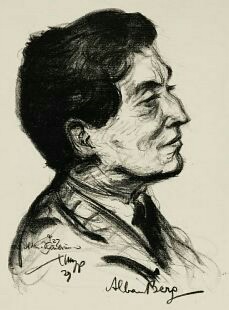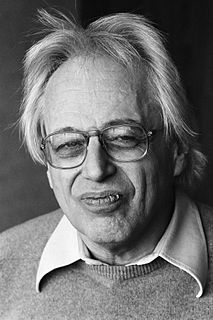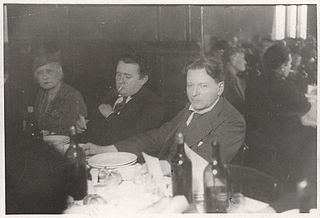Related Research Articles

The String Quartet No. 4 in C major by Béla Bartók was written from July to September 1928 in Budapest. It is one of six string quartets by Bartok.

Walter Hamor Piston, Jr., was an American composer of classical music, music theorist, and professor of music at Harvard University.

The Lyric Suite is a six-movement work for string quartet written by Alban Berg between 1925 and 1926 using methods derived from Arnold Schoenberg's twelve-tone technique. Though publicly dedicated to Alexander von Zemlinsky, the work has been shown to possess a "secret dedication" and to outline a "secret programme".
Harold Shapero completed the Symphony for Classical Orchestra in B-flat major on March 10, 1947, in Newton Centre, Massachusetts. It is written for an orchestra consisting of piccolo, 2 flutes, 2 oboes, 2 clarinets in B-flat, 2 bassoons, contrabassoon, 2 horns in F, 2 trumpets in C, 2 tenor trombones and one bass, timpani and strings. Although labelled "Classical," many of the work's features point to Beethoven rather than Haydn or Mozart, such as "the way in which Shapero paces himself, alternating long passages in the tonic and the dominant, with fast, dramatic modulations often reserved for transitions and developments." Nicolas Slonimsky remarked on how the piece is "premeditatedly cast in the proclamatory key of B-flat major, the natural tonality of the bugle, and ending in a display of tonic major triads." But there are modern features as well, with "the work's orchestration, in general, ... distinctively bright and brassy, and undoubtedly derived a fair amount from Piston and Copland, as well as from the composer's experience as a dance band arranger."
Symphony No. 2 by Walter Piston is a symphony composed in 1943.
The Symphony No. 6 by Walter Piston was completed in 1955.
The Symphony No. 5 by Walter Piston was composed in 1954.
The Symphony No. 8 by Walter Piston is a symphony dating from 1965.
The Symphony No. 1 by Walter Piston was completed in 1937.
Walter Piston's Serenata for Orchestra is an orchestral suite or miniature symphony written in 1956.
The Sonatina for Violin and Harpsichord is a three-movement, neoclassical chamber work composed by Walter Piston in 1945, that marks the beginning of his postwar style.
String Quartet No. 1 by Walter Piston is a chamber-music work composed in 1933.
String Quartet No. 3 by Walter Piston is a chamber-music work composed in 1947.
String Quartet No. 4 by Walter Piston is a chamber-music work composed in 1951.
String Quartet No. 5 by Walter Piston is a chamber-music work composed in 1962.
The String Quartet in D major is the only string quartet composed by César Franck. The work was written from 1889 to 1890.

String Quartet No. 17 is the last of seventeen quartets by the Brazilian composer Heitor Villa-Lobos, and was written in 1957. A performance lasts approximately twenty minutes.

The Hungarian composer György Ligeti published three string quartets throughout his life: two string quartets proper and a student piece from 1950 published towards the end of Ligeti's life. The first two string quartets proper represent both his early period, inspired by Béla Bartók, and middle period, which was largely micropolyphonic.

Piano Quartet No. 2 in D minor, Op. 30, is a chamber-music composition by the Romanian composer George Enescu, written in 1943–44.

The String Quartet No. 2 in G major, Op. 22, No. 2, is a chamber music work by the Romanian composer George Enescu, composed mainly between 1950 and 1951, though it has a lengthy pre-history and received a number of revisions in 1952 and possibly early 1953. The score is dedicated to the American pianist, composer, and arts patron, Elizabeth Sprague Coolidge. A performance of it lasts about 25 minutes.
References
- ↑ Pollack 1982, 42–43.
- 1 2 Pollack 1982, 43.
- ↑ DeVoto 1988.
Sources
- DeVoto, Mark. 1988. Booklet notes for Walter Piston: String Quartet No. 1; String Quartet No. 2; String Quartet No. 3. The Portland String Quartet (Stephen Kecskemethy and Ronald Lanz, violins; Julia Adams, viola; Paul Ross, cello). CD recording. Northeastern NR 9001 CD. Boston: Northeastern University.
- Pollack, Howard. 1982. Walter Piston. Studies in Musicology. Ann Arbor: UMI Research Press. ISBN 0-8357-1280-X.